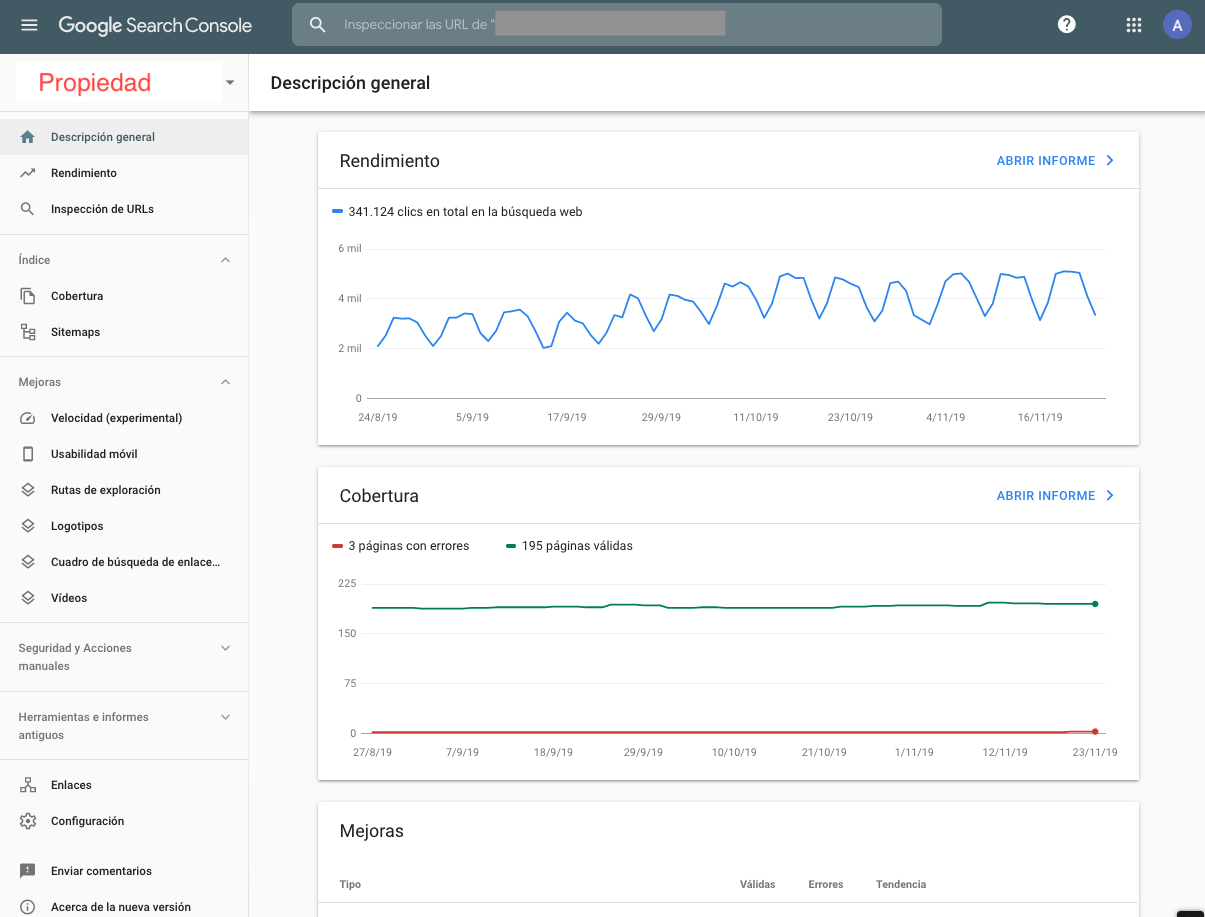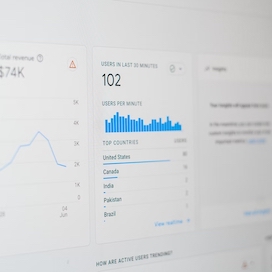Written by María Navarro
Google Search Console is a collection of free tools and resources provided by Google and a must-have for anyone with a website, regardless of the type of content it offers. The tool monitors how Google sees our site, as well as helping us to detect and solve problems, thus improving optimization and organic visibility.
Google Search Console offers us the possibility of measuring search traffic and the performance of our website, as well as detecting and correcting indexability problems, crawling errors or with the implementation of structured data. By applying the recommended solutions on the problem pages you will improve your website and make it stand out in Google’s search results.
If you are looking to position your portal, Google Search Console is a key tool thanks to the valuable information it provides directly from Google itself.
As a curiosity, this tool was called Google Webmaster Tools until 2015. The reason for this name change was due to the inclusion of all its users, since Google Search Console was used not only by webmasters, but also by SEO experts, website owners…
Some of the main functionalities offered by this tool are: including the visualization of reference domains, website performance, enriched results, queries of pages and terms with the highest traffic…
Why use Google Search Console?
- It allows us to know if our site is crawlable for Google robots.
- With GSC, we can detect and fix indexing problems, as well as make requests to index new or updated content.
- It provides us with portal performance data: how many clicks a keyword or URL has received, from which devices users arrive, total impressions, average CTR, average position…
- Provides alerts when Google detects problems on your website.
- Displays data from the domains that link to us externally.
- Allows you to view information about the sitemap.xml file.
- Fixes issues related to AMP pages, structured data, mobile usability and other Search features.
Who should use it?
Anyone who has a website regardless of the type of portal content or expertise. Google Search Console is a simple to use and very useful tool especially for:
- SEO specialists or marketing professionals: will help you to monitor website traffic, optimize your positioning and make decisions or strategies to improve visibility in search results.
- Web developers: If you have developed a website, Search Console will allow you to review, monitor and troubleshoot technical and markup issues such as structured data errors.
- Entrepreneurs with websites: even if you are not going to use Search Console, it is advisable to know the basics and what the tool offers to improve your business.
- Web administrators: to ensure the correct functioning of the website, Google Search Console allows you to easily monitor and detect possible page load, server and security errors.
Main features of Google Search Console
Below, we discuss the main reports and functionalities available in this tool:
Overview: in this tab you will find a brief summary of the status of the website in relation to the performance of the last 3 months, the coverage (how well it is indexed) and recommended improvements.
Performance: this functionality is fundamental and very valuable, especially for those of us who are dedicated to SEO. It provides data on clicks, impressions, CTR and positions that our website has received in a period of time that we can stipulate as well as comparisons between periods.
- Clicks: indicates the number of times users have clicked on a term or URL from the search results.
- Impressions: this data corresponds to the number of times a link to our website has been shown in the search results.
- CTR: is the conversion rate, that is, the percentage of impressions that have generated clicks.
- Position: indicates the average position of your website in search results.
In addition, these four options offer the possibility of filtering the data by: query terms, URLs, countries, devices and search engine appearance.
URL inspection: this feature allows us to inspect a specific URL. This inspection provides information on indexing status, coverage and possible improvements such as mobile usability. We can also request indexing and even view the crawled page as Google would see it, both in HTML and as a screenshot.
Coverage: this tool shows the data of the pages crawled by the Google robot. With this report we can visualize pages:
- Valid: pages that have been indexed correctly.
- Valid with warnings: indexed pages with some problems. We can display the warnings and get information about the problem to try to solve it.
- Error: pages that for any reason cannot be indexed are considered. As in the warnings we can obtain information about the error.
- Excluded: excluded pages are URLs that Google has intentionally not indexed.
For all options we have the details section, where detailed information is specified for each of the options.
Sitemaps: in the sitemap tab we can send the URL of our sitemap file. In this way we help Google to find all the URLs that make up our website. This will make it easier for you to crawl and index it. In this report we can also see the status of the file sent.
Mobile usability: this report indicates which pages of your property may have a problem related to usability on mobile devices. It presents both correctly optimized and non-optimized pages. The most interesting thing at this point is that Google Search Console identifies the problem found, which facilitates its detection and correction.
Rich results: with this report you will be able to detect which rich results Google has been able to read and which have not. There is a different report for each type of enriched result: each will indicate whether it has detected errors and how to fix them.
Links: you will be able to know very valuable and fundamental information about internal and external linking:
- External links: you will find all the information about the links pointing to your property from other external domains, you will be able to know which are the URLs of your portal with more external links, which domains link to them and which are the most frequent anchor texts (anchor text).
- Internal links: links that belong to and link internally to your own pages. With this information you will have a quick overview of the URLs with the most links and identify if the information architecture is appropriate.
This article is an initial approach to what Google Search Console is, who it is for and the main reports and data it provides. As we mentioned at the beginning, it is an extremely useful tool for anyone who has a website or is going to work on one. We encourage you to enter the tool, fight with it on a daily basis and take advantage of all the resources it offers.




